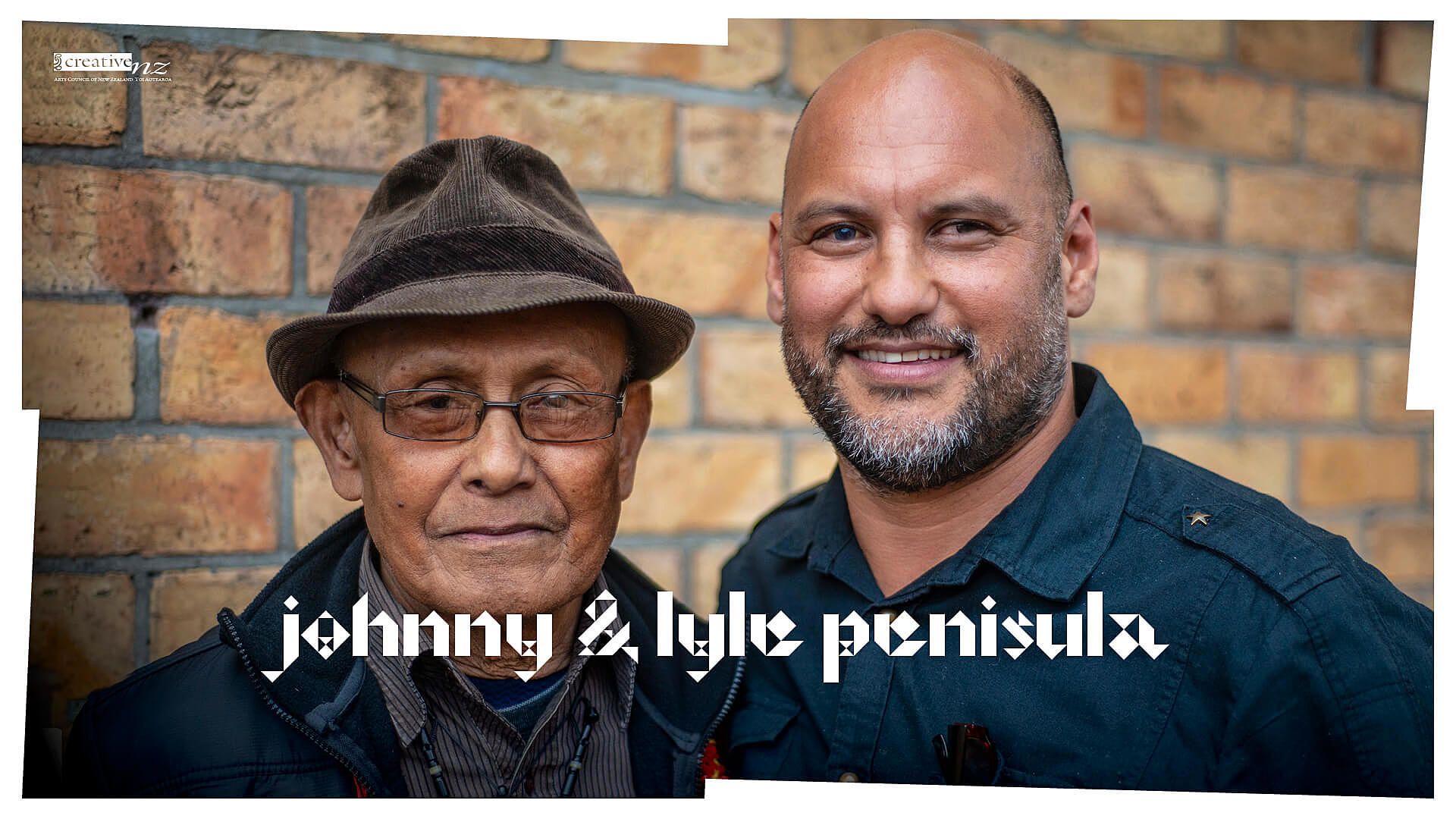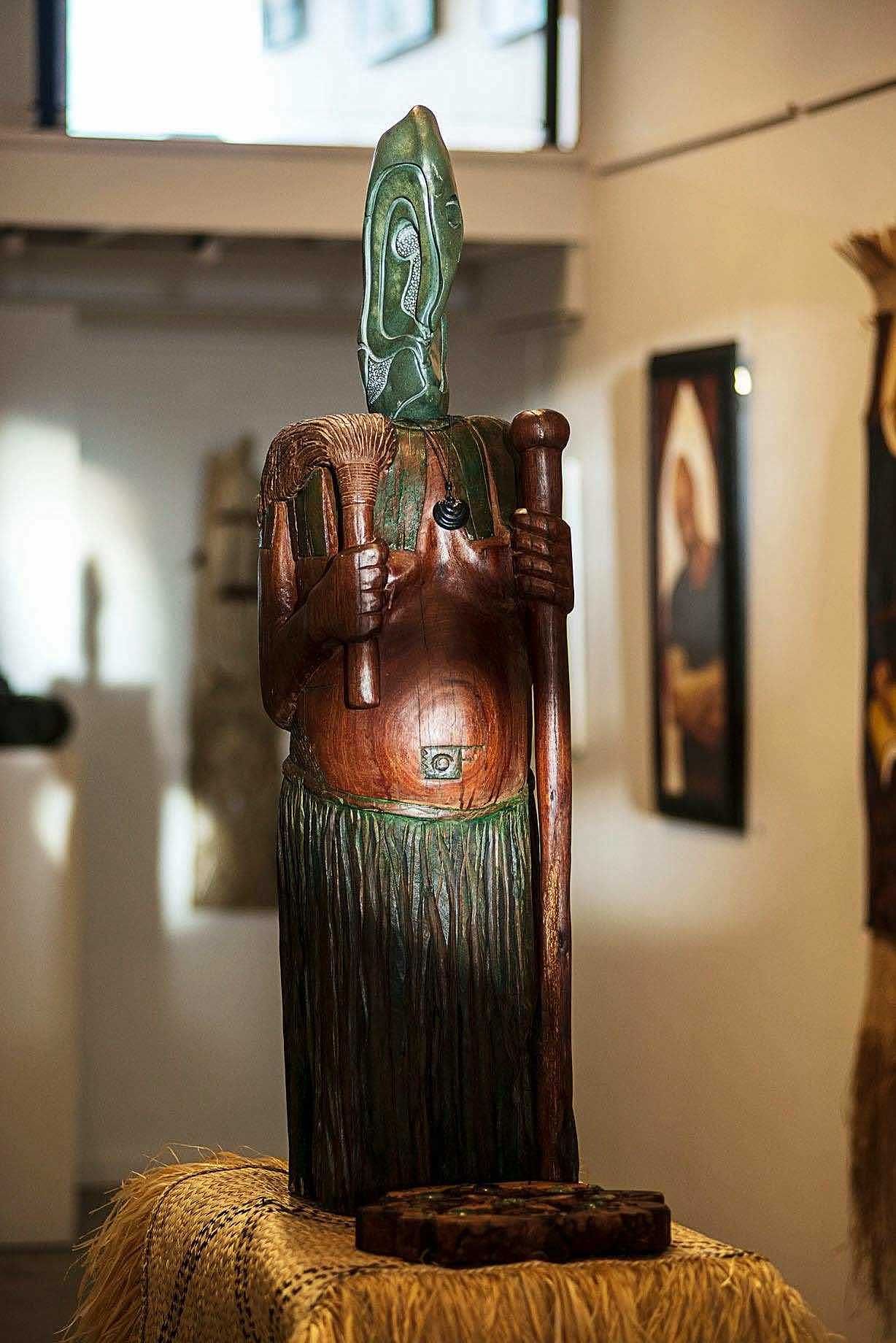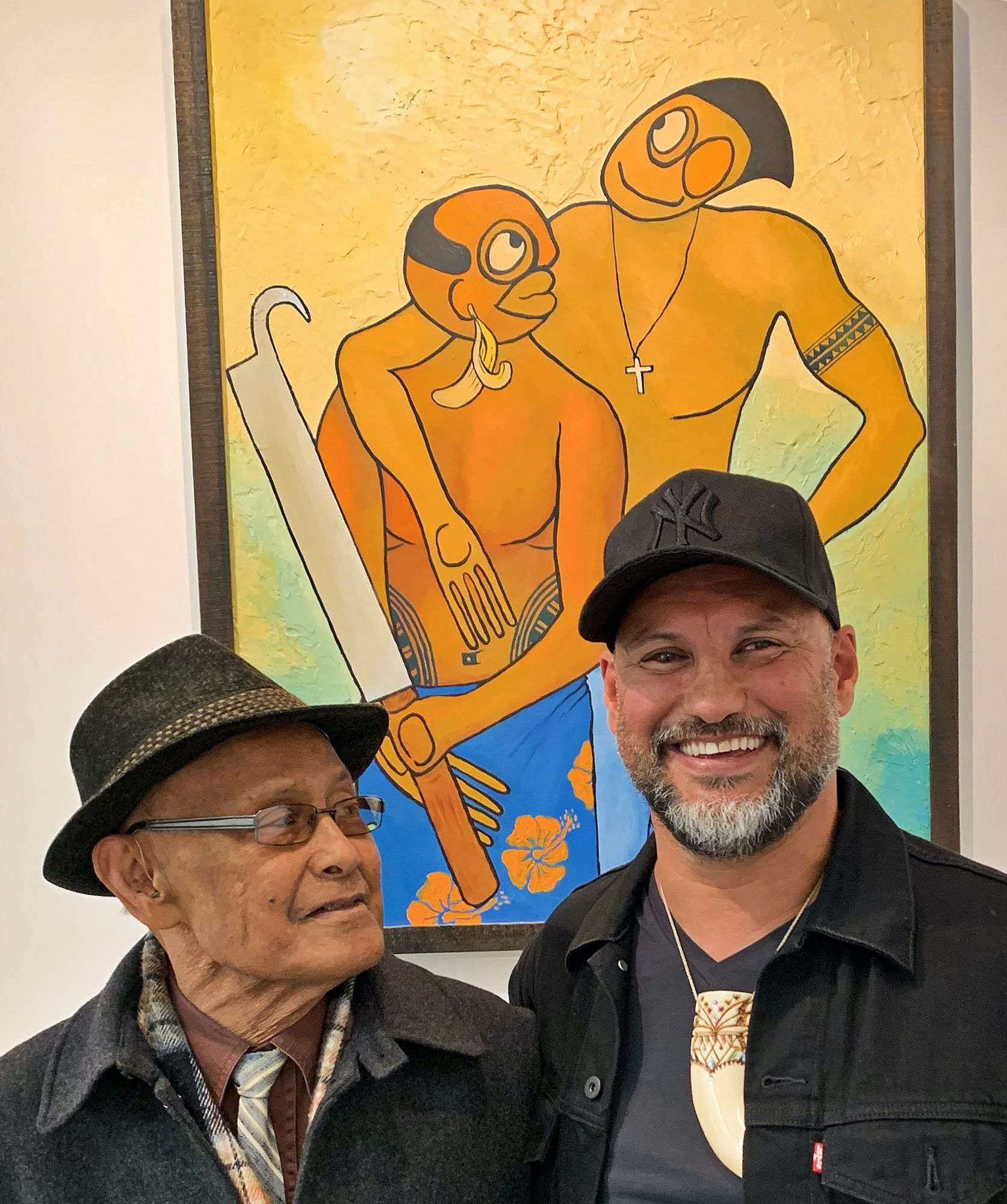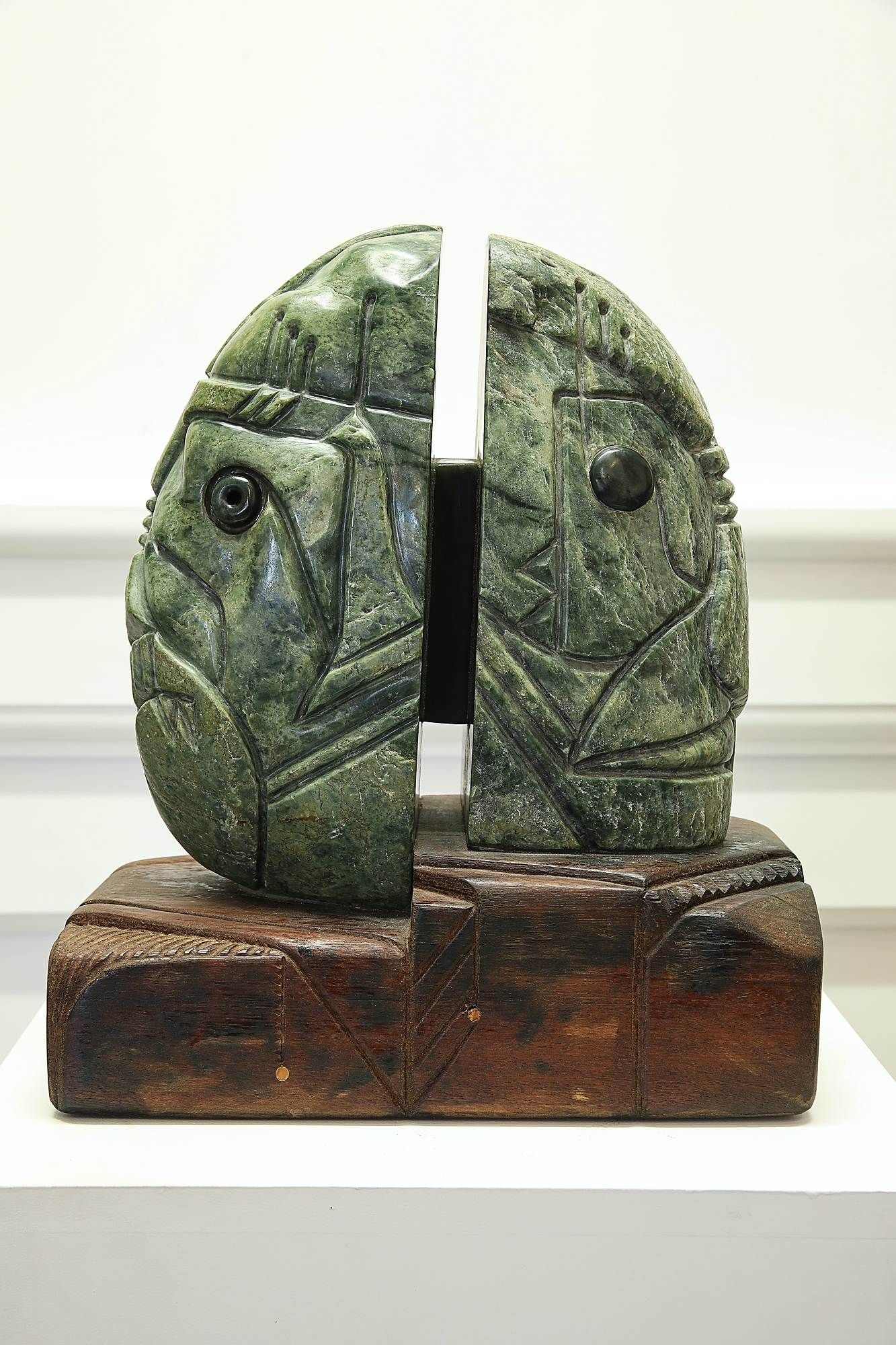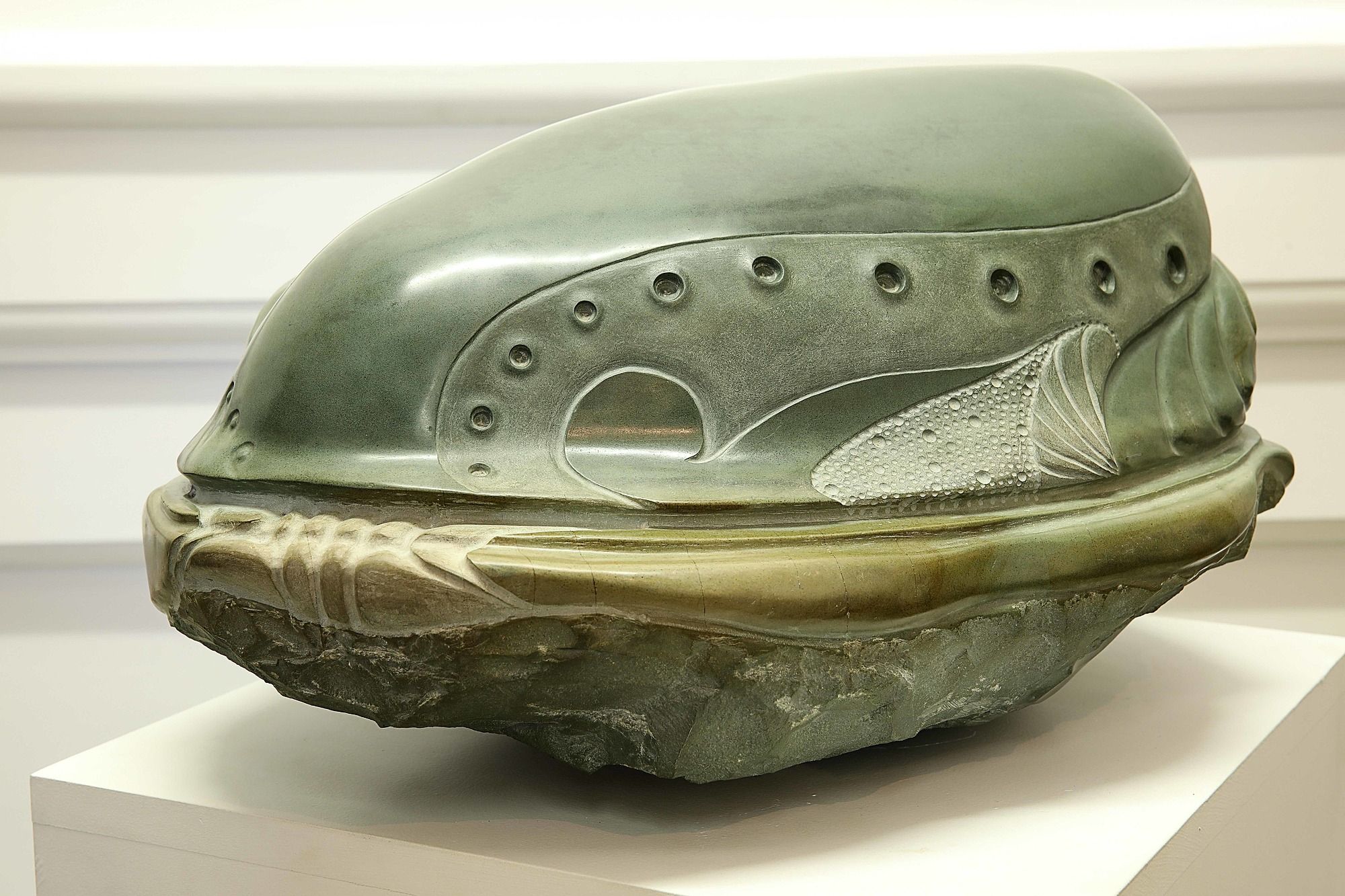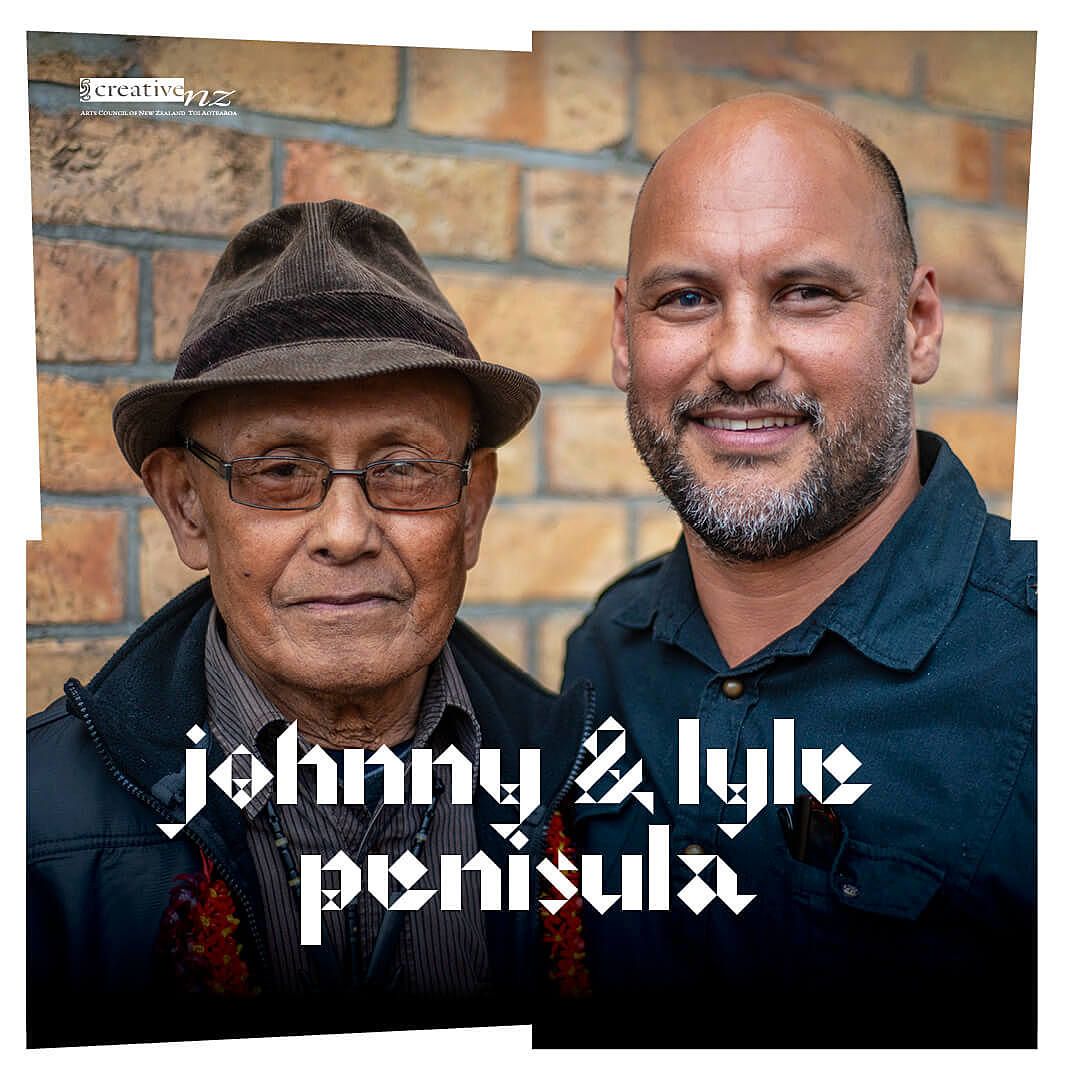Tūfuga and dad, Johnny Penisula
From Sāmoa to Southland, Ioane (Johnny) Reuelu Penisula is a renowned master stone carver whose work and life has been dedicating to serving and empowering his aiga. Lyle Penisula writes on the legacy of tūfuga and dad, Johnny Penisula.
We’re collaborating with Creative New Zealand to bring you the groundbreaking Pacific Arts Legacy Project. Curated by Lana Lopesi as project Editor-in-Chief, it’s a foundational history of Pacific arts in Aotearoa as told from the perspective of the artists who were there.
Invercargill, our most southern city in Aotearoa is where I was born and bred and is where my father Johnny Penisula honed his craft as a master stone carver. Little did I understand this growing up, what I observed during this time was a hard-working Dad striving to make ends meet. Working faithfully at the freezing works for twenty plus years and in between seasons working as a fitter wielder for various local engineering firms.
It was in the early days in my Dad’s spare time away from work, that I saw him painting, mostly local scenic works. Many of which he sold or gave away to family and friends. Some Southland scenes including of Mitre Peak in Milford Sound and the Purakaunui Falls in the Catlins Dad painted multiple times as his paintings (and these scenes) became popular.
Dad was a self-taught painter, his style was influenced by the scenic works of English artists, Joseph Mallord William Turner and John Constable. However, it was the Dutch master Rembrandt, that inspired Dad to give portraiture a go. Mum and my sister Neʻetia will remember this period very well as they sat for hours as Dad’s models.
In the mid to late seventies while Dad studied fine arts by correspondence he was exposed to other mediums. It was through this course that Dad was introduced to sculpture. He discovered Picasso and his sculptures made with found objects. It was Picasso’s Bulls Head of 1942, which inspired Dad to shift from 2D works to 3D. I think this piece gave Dad permission to be free, particularly to express his sense of humour and it was here that his engineering skills were put to creative use.
Portrait of Johnny Penisula, courtesy of Raymond Sagapolutele.
As he studied, he found the opportunity to show his work in Southland Art Society exhibitions. And it was in this environment that he found that he could be more himself through the medium of sculpture. The first sculpture Dad exhibited was titled Sore Horse, he put together a wooden saw horse and a hand saw to look like a horse, and hammered a nail in the backside and then used the hammer to form a tail. It was a hit with everyone involved in the exhibition, artists and viewers alike.
Southland being a Scottish settled region meant that having an artist of Sāmoan heritage involved in the local art scene was new. Dad was welcomed and accepted as a fellow artist, not categorised as a Sāmoan artist, as the modern Pacific arts movement was yet to be discovered.
Here is a question, are you a Samoan artist because of your Samoan heritage or because you use Samoan themes and motifs in your work? Can you separate the two? Up to this point Dad was not using any Sāmoan themes or symbols in his work. He simply considered himself an artist who just happened to be Sāmoan.
Are you a Samoan artist because of your Samoan heritage or because you use Samoan themes and motifs in your work? Can you separate the two?
The eighties was a decade of huge change for Dad. During this time his whole world was turned upside down. First, he had to endure incredible financial pressure while striking as a freezing worker through a turbulent time when Aotearoa was going through major economic change. When he finally got back to work, he had an accident where a huge freezer door was caught by a gust of wind and struck him in the back.
The injury was a blessing in disguise as it was a catalyst that shifted Dad on to a new trajectory where he couldn’t return to the freezer but was forced by circumstances to try something new. It was a scary prospect for Dad as he was now in his mid to late-forties. He loved the arts but could he back himself to make a living from it and provide for his aiga?
In the end Dad took the leap of faith and chose to do further training in the visual arts. His skill in sculpture using materials like steel, aluminum, bone, wood, argillite, greenstone and limestone was made immediately apparent and quickly mastered. Before Dad even graduated in his training he was employed as a teacher to tutor new students. He was a natural and he loved what he was doing. Next was the rediscovery of his Sāmoan cultural roots.
Dad as he was now in his mid to late-forties. He loved the arts but could he back himself to make a living from it and provide for his aiga?
It was around this time when I was studying at art school in Otago. I discovered my creative genes and was now exploring ideas of cultural identity. Having met fellow student Michel Tuffery, I began a journey of Polynesian discovery. I remember asking Dad a lot of questions, because up to this point in my upbringing Dad had kept me distant from a lot of Sāmoan culture, particularly the negative aspects of Fa’a Sāmoa here in Aotearoa. As I asked questions and we talked about the meaning of Sāmoan symbols and island practices we sparked inspiration for each other.
Dad enjoyed being isolated in the deep south for many reasons. Some of those reasons he keeps close to heart, but I think for the best part it was because he was able to develop his own work in isolation without the distraction of others or particularly any cultural politics. Dad prefers to let his work to do all the talking.
Through a joint exhibition with Michael Tuffery in 1988, I was introduced to Fatu Feuʻu, Lily Laita, Sale Jessop, Ioane Ioane and John Pule. Just a few of the artists who were beginning to gather, and who were to be instrumental in making history in Pacific arts. It was within the next couple of years that Dad now a master carver would come out of obscurity from the deep south, and add his weight behind a movement of Pacific artists that would bust open all sorts of doors for those who were following.
A master carver would come out of obscurity from the deep south, and add his weight behind a movement of Pacific artists that would bust open all sorts of doors for those who were following.
Dad was born Ioane Reuelu Penisula on April 8, 1941, while my grandfather Reuelu Penisula Fa’alavaau was training at the LMS (London Missionary Society) Theological College in Malua, on the island of Upolu, Sāmoa. When my grandparents completed their theological training in 1943 they began their church ministry in the village of Fatuvalu in the district of Safune, Savaiʻi.
Dad spent his formative years 1943-1956 in the small village of Fatuvalu and I believe it was here during this time that the subject matter for his many works are found. In particularly the two big reoccurring themes found in Dad’s work, the coconut and the octopus.
THE OCTOPUS
The name of my grandfather’s church in Fatuvalu is ULUA’I TAEAO OLE TALA LELEI which is translated The Beginning of Christianity in Samoa.
The story as my Dad tells it, is that on the reef directly opposite the front doors of his family church in Fatuvalu, the ship carrying the missionary John Williams and his missionary party stopped and made contact with a woman from his village who was fishing for octopus on the reef. The woman offered John Williams a coconut for refreshment in which he responds with gratefulness and cheer through a prayer of thanks.
Dad attributes this moment as the time when the first Christian prayer was prayed in Sāmoa although formal history credits the village of Sapapali’i as the birthplace of Christianity in Sāmoa. His home village seem to agree with him as the name of their church confirms the story. It is also good to note that on a wall of this church, in his early teens Dad painted his first mural.
THE COCONUT
The fresh spring pool Mata o le Alelo in the village of Matavai, is found only a few hundred metres from Dad’s village of Fatuvalu. It is this pool which is associated with the legend of Sinaand the Eel. The creation story of the coconut and the coconut tree.
I can see that these stories have made a significant impact on my father and have been a source of inspiration for his work, the octopus and coconut have evolved into a couple of his most personal symbols.
Dad moved to the village Fa’atoia in Apia to attend Sāmoa College from 1957-1960, and when he graduated he worked for the family moving between Savai’i and Apia as he was needed. It was in the daily lifestyle of traditional Sāmoan living, from the food, to fishing, tending to the plantation, the various crafts required to maintain village life, and particularly the village leadership structure (fa’a Matai) that Dad drew a lot of his source material for his work.
As an artist I have drawn inspiration and ideas from symbols and motifs found in my Sāmoan heritage as I searched them out. I discovered their meaning from a distance, almost second hand, like learning a second language. Dad applied cultural symbols and motifs to his works fluently and applied traditional skills like weaving and knot tying with ease. He lived these skills, worked them in his everyday life as a young man while serving his family in Sāmoa.
Matai, 1989, Australian Hardwood and Agilite.
I knew the curator was keen on Dad’s pieces but rejected mine. I’ll never forget that day, it was the day that my Dad had my back.
Dad married my Mum in 1968. A palagi of Scottish decent. They had three children, one son and two daughters. In 1978 Dad took us home to his family village, Fatuvalu. I was young, only ten years old. But I can remember vividly the experience. I saw traditional village life in action. I observed my grandparents serving their community as ministers and how hands on they were with their people. A lot of what I experienced and saw as a ten-year-old, helps me to now as an adult contextualize some of Dad’s work and thinking. That family holiday was 43 years ago, Dad hasn’t been back to his home village since.
Dad was a son of a faife’au (minister). I was intrigued, why was there no obvious Christian influence in his work? As kids Dad sent us to the local (palagi) Church, though he didn’t attend himself. I remember as a teenager asking Dad, ‘Why don’t you go to the Samoan Church?’ Dad answered, ‘This is New Zealand not Sāmoa.’ And that was the end of that conversation. It was obvious there was more to it than what Dad was prepared to explain, it wasn’t until some years later that I began to understand.
As I got older and found my own Christian faith, and themes from my faith began to emerge in my paintings. Dad was proud of the direction I was taking. We exhibited together a number of times and Dad often said to others that my work also spoke for him. In Ponsonby, Auckland, we had an incident while trying to secure a venue for an exhibition. The curator of the gallery asked to look at some photographs of our work and our credentials. He studied the photos for a bit and then said, ‘I am happy to exhibit Samoan pieces, but it’s a firm no on any Christian themed works.’ Dad was highly offended by the ignorance and subjective bias of the curator, he asked him, ‘Do you really understand what Samoan art is? You can’t separate Christianity from being Samoan.’ I knew the curator was keen on Dad’s pieces but rejected mine. I’ll never forget that day, it was the day that my Dad had my back.
Father & Son at the AIGA Exhibition, 2019.
In 2001 I was ordained into pastoral ministry. I became a faife’au. My extended aiga was extremely proud, I was following my grandfather’s footsteps. I remember when I embraced one of my aunties, she congratulated me and whispered in my ear, ‘Well done son we are proud of you, now don’t let us down, be a good one.’ It was here where I began to understand more fully my Dad and some of the thinking of my uncles and aunties. It appears what they experienced in Sāmoa growing up was vastly different to what they saw in operation here in Aotearoa. Dad had the belief that the fa'a Matai system in Sāmoa was about the welfare and well-being of the extended aiga. And that the faife’au has a responsibility to represent God by serving the people. It is about serving, not your position or power. As our people migrated to Aotearoa and tried to replicate those cultural and religious systems in a foreign environment it became apparent that they were open to corruption and greed. Dad communicates the purity and the honour the role of fa’a Matai has in a couple of his sculptures such as Matai 1989, Fale Tele 1998, Fa’atau 1999. He prefers to emphasize ideals than point out the failures.
The faife’au has a responsibility to represent God by serving the people. It is about serving, not your position or power.
Fa‘atau, 1999.
In 1962, Dad migrated to New Zealand. He travelled from Sāmoa to Fiji, celebrating his 21st birthday on the ‘Banana Boat’ the MV Matua while on the journey. He then flew from Fiji and landed at Whenuapai, Auckland in April 1962. He worked in a plastic factory in Onehunga for three months before shifting to the deep south to the port town of Bluff. He found temporary work at the Railways for three weeks before securing work at Ocean Beach Freezing Works in late July of 1962.
Sina’s Seed No.1, Southland argillite, 1995.
That was a lifetime ago. Dad is now 80 years old and a believer that art should reflect who you are, what you are and where you are. He has spent more years in Aotearoa than he has in his birth country. Don’t be fooled, his work might be full of Sāmoan themes and symbols but his underlying message is relevant for today’s viewers in any context. I recently had the honour to be part of an unveiling of one of Dad’s sculptures carved from Southland Argillite in 1995 called Sina’s Seed No1 at ILT Stadium Southland. It was bought and gifted to the City of Invercargill. It was appropriate that this particular sculpture was chosen. Sina’s seed, a coconut, found its way from Sāmoa to Murihiku, Aotearoa. That seed took root and went on to produce a harvest, it left a legacy. The carving from my observation has a form of a Paua which is found in abundance on the southern coast as opposed to a coconut. Maybe that represents Dad’s personal journey and evolution.
Dad is a proud Southlander and has served his region with passion and pride. He is a patron of the arts and culture in our region. Highly respected and honoured by the southern community. A man that never sort a position or any power role just operated in the ideals he grew up with in Samoa. To serve and empower aiga.
*
This piece is published in collaboration with Creative New Zealand as part of the Pacific Arts Legacy Project, an initiative under Creative New Zealand’s Pacific Arts Strategy. Lana Lopesi is Editor-in-Chief of the project.
Series design by Shaun Naufahu, Alt group.
Header photograph courtesy of Raymond Sagapolutele.
